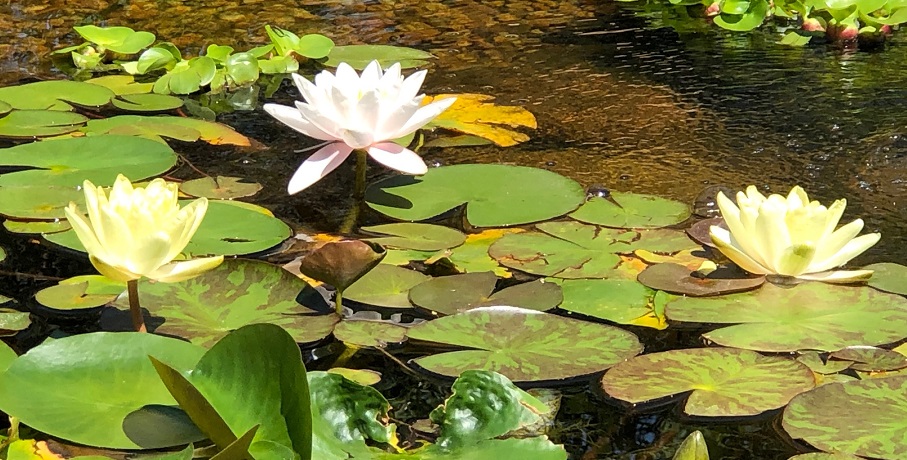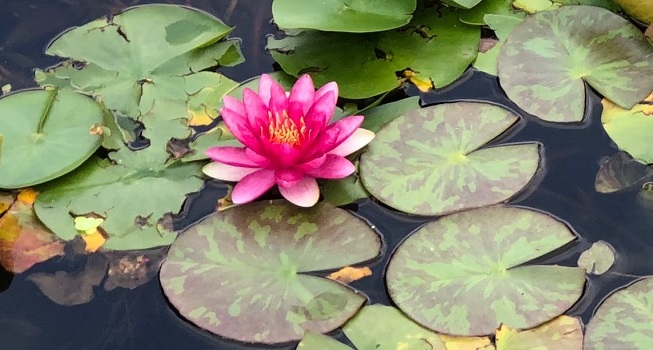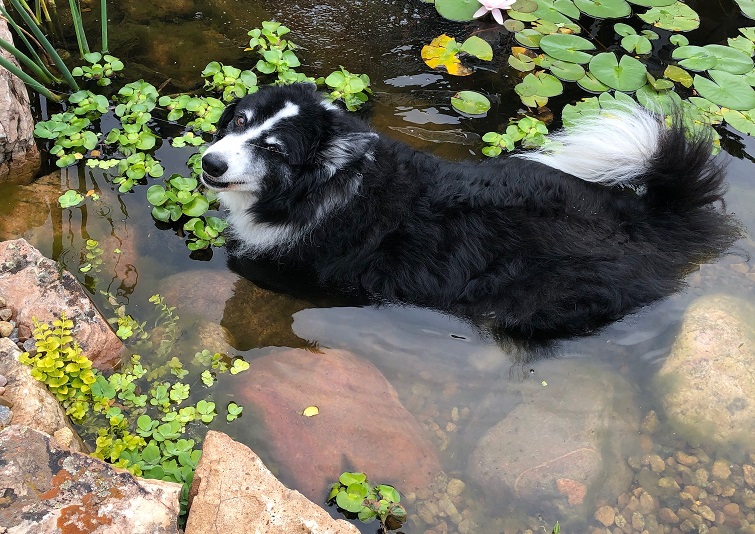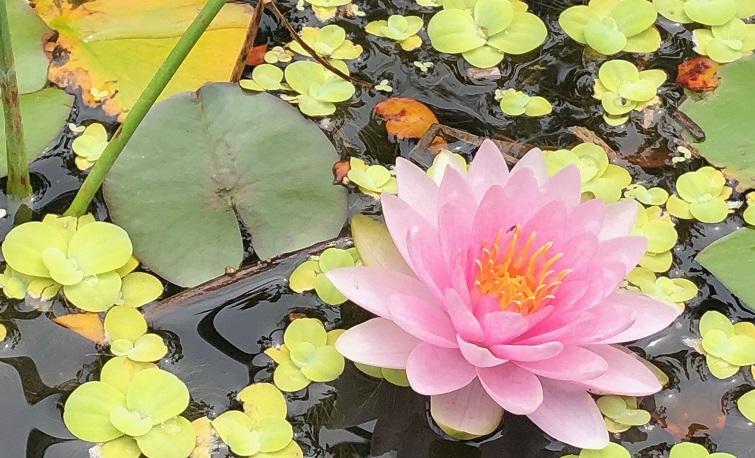
Hardy water lilies do well in a sunny Colorado pond. Benefits in the pond are many! The shade they provide gives shelter to fish from predators (you can’t eat what you can’t see!) as well as keeping the pond cool. Shade stabilizes the water temperature and keeps it from high fluctuations. Ponds in sunny locations with little or no plant life experience more algae. Lilies help keep the pond in balance by providing oxygen and using up nutrients in the water that feed algae as well as blocking some of the sun.
Protection from the sun is super important! Did you know fish can sunburn? Yes, so they need shade. Predators also have more difficulty getting to fish when they can’t see them and they can hide under the lily pads.

Lilies do not do as well in a full shade pond and flower less. To thrive they need 5 or more hours of sun. Leaves live 3 to 4 weeks before turning yellow and dying off. Flowers will last for 4 days. They will bloom around 9 a.m. and close around 5 p.m. each day. Once they close for good, new flowers will appear.
Potting:
- Plant in loam garden soil – not regular potting soil!
- Use a fabric aquatic plant pot or a plastic pot . 14 to 16 wide inches is ideal.
- Plant the rhizome with the end with a plant coming out of it close to the wall of the pond allowing the rhizome to grow in the rest of the space in the pot.
- These plants grow as a “rhizome” and the crown should not be covered by the soil.
- They will grow directly in the gravel, but do better in soil and will float up if not anchored down. When not in pots they can make cleaning out the pond or separating the plants more difficult later.
- Put 2 or 3 fertilizer tabs into the soil for optimal flower color (Lilies come in a variety of colors!)
- When first introducing a lily rhizome to the pond, put it in at about 6 inches depth, if possible. As the plant grows, lower it to 12 to 24 inches below the surface. If the pond is too deep, put an upside-down pot under the lily pot to raise it up if you need to.
- When purchasing lilies be aware that there are tropical lilies and hardy lilies. Hardy lilies will withstand the Colorado winter and return each spring

Dividing and repotting
- Every 2 or 3 years the lilies will need to be divided. They do best when they are divided in the fall.
- Signs they need to be repotted
- The leaves (pads) come out much smaller than they had been. Clip off all pads at the very base that are undersized. Then pull out the tuber and find the nodes on them (sort of like a new potato eye) and cut them off. This allows the energy of the plant to be back on the big pads and flowers. Put tuber back in pot and return to water.
- Tubers are growing out of the pot or seem overcrowded
- Take the pot out of the pond and hose off the soil. You will be able to see that there are different rhizomes. You’ll need to cut these into separate pieces, keeping the most healthy-looking ones and discarding the others.
- Repot the ones you are keeping, putting some gravel on top of the soil to weigh it down and put it back in the pond. Use the same potting techniques as listed above.
Fertilizing
- Add aquatic lily pad fertilizer tabs every 4 to 6 weeks or use a slow release fertilizer that only needs to be used once a year.
- Push the fertilizer down in the soil so they are near the bottom of the roots.

Trimming
- Leaves live 3 to 4 weeks and can be removed when they look yellow or brown.
- If the plant has had hail damage, do not pull the damaged pads off right away because they are still processing sunlight and providing energy to the tuber. The plant will put out new lily pads soon! Wait until the damaged pads are turning brown to remove. A quick tug and they will come right off.
- Spent flowers maybe be trimmed off and doing so will encourage the plant to produce more flowers. If you see a bud under the water and are wondering if it will flower or it has already flowered, lift the bud out of the water and give a gentle but quick squeeze to it. When it squirts out water, it is dead – clip it off at the root ball. A firm bud that does not squirt water will flower soon!

Fish
- Sometimes koi will burrow into the gravel and soil of a lily and uproot them. Try putting some larger cobble over the soil to deter fish.
- If koi are eating your lilies you may need to offer them other plants to nibble on like floating hyacinth.
- If you need to protect the lily plant from the fish, there are these specialized nets that float at the top to protect lilies. They are floating plant protectors by Nycon.

Winter
Hardy lilies will go dormant during the winter. Therefore, we recommend cutting them back to about 6 inches above the root ball in late fall. Move them to the deepest part of the pond for the winter. Never leave them where the root ball can freeze. They can stay in the pond all winter and will come back in the spring. Move them to a 24 to 18 inch depth in the springtime.
Spring
The first leaves that a lily pad puts out in the spring will be smaller and often a darker color and sort of red. They put these up as early as they can to start processing the sun to help the plant grow. The next set of leaves will be larger.
Want to read more about pond plants? There are a variety of aquatic plants! Click HERE to check it out!

